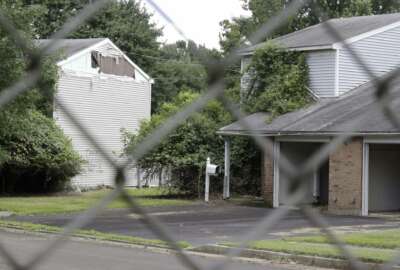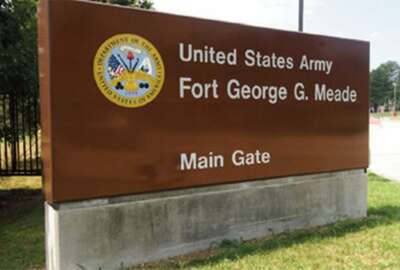
Army creating long-term plan to fix housing issues
The Army's strategy will work in five-year increments with two pilot programs at several bases.
The Army is in the midst of putting together a long-term plan for improving privatized military housing, and is currently implementing two pilot programs it hopes will improve living conditions for leaders in the service.
Gen. Gustave Perna, leader of Army Materiel Command, said the plan will be broken into five-year increments, and will modernize communities while monitoring the current housing situation.
“It’s really nice for me to say, ‘I want Emerald City at the end,’ but you’ve got to put a plan together to get there,” Perna told reporters Tuesday at a Defense Writers Group event in Washington. “It’s not only housing, the Army secretary and chief of staff have visions to bring our installations into the modern era. How do we integrate with the local communities?”
Perna said 70% of the force lives off base, which means the Army needs to do a better job of intertwining community amenities with installations.
Related Stories
Perna’s plan was informed by a three-day conference he set up with all of the Army’s garrison commanders and the housing companies.
“We defined what we want our installations to look like with the privatized housing,” Perna said. “Once we defined it, then we came back and defined what it looked like today. How many houses are brand new? How many houses are modernized and how many houses need work?”
Perna said it is about a one-third split. About 35,000 homes are brand new, 27,000 have been modernized and the Army needs to get rid of or modernize 25,000.
The plan is the Army’s secondary response to the military housing crisis that came to light in February. Military families came forward and reported mice, mold and lead paint in their homes. The Army, other military services and housing companies responded by hiring extra staff, setting up hotlines and increasing mandatory inspects.
Some families are suing the companies for damages.
Two pilot programs underway at several bases
The Army already started two pilots it hopes will ease life for some of its leaders. Those pilots will then expand to other ranks.
The first is focused on enhancing quality of life at Ft. Wainwright in Alaska, Ft. Irwin in California and Ft. Polk in Louisiana.
Perna said those installations are important because they are in austere environments, and basic training is conducted at the last two.
“We send out best leaders at all levels to train our BCTs and then they are in these installations in the desert and places where they don’t have a lot of quality of life stuff,” Perna said.
The pilot works with communities to bring in amenities and education to the bases.
“If we can get those bases right then we can get them all right,” Perna said.
The second pilot is at Ft. Bliss in Texas, Ft. Leavenworth in Kansas and Carlisle Barracks in Pennsylvania. All of those installations house leadership schools for the Army.
“Give or take we have a thousand leaders that rotate in and out of there every year,” Perna said. “We are cutting orders 120 to 180 days out and telling them they can’t report until a certain day so we can synchronize and integrate their household goods. We can make sure their houses are available when they get there. We can make sure their houses are clean and there are no work orders required on them.”
Perna said families will move in and their goods will be right behind them allowing leaders to move in with their families without worrying about staying in a hotel or dealing with other housing issues.
“If we can do that, why can’t we do it for the entire Army?” Perna said.
Copyright © 2024 Federal News Network. All rights reserved. This website is not intended for users located within the European Economic Area.
Scott Maucione is a defense reporter for Federal News Network and reports on human capital, workforce and the Defense Department at-large.
Follow @smaucioneWFED





